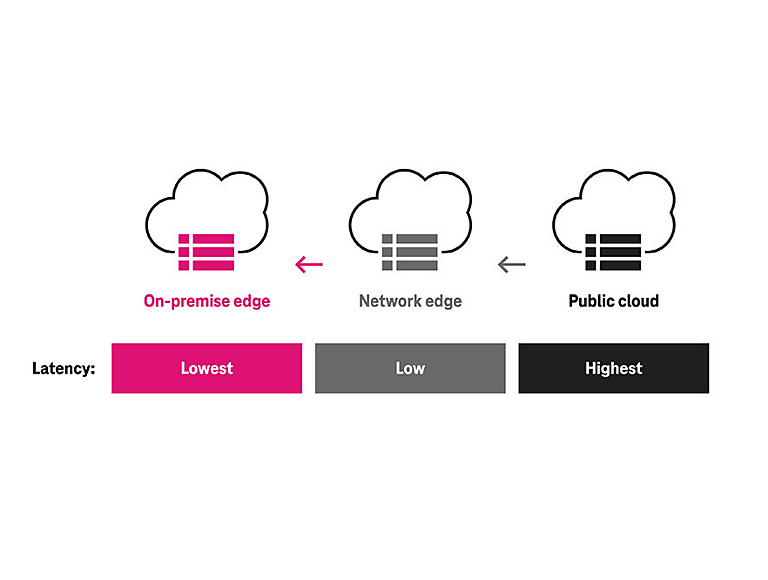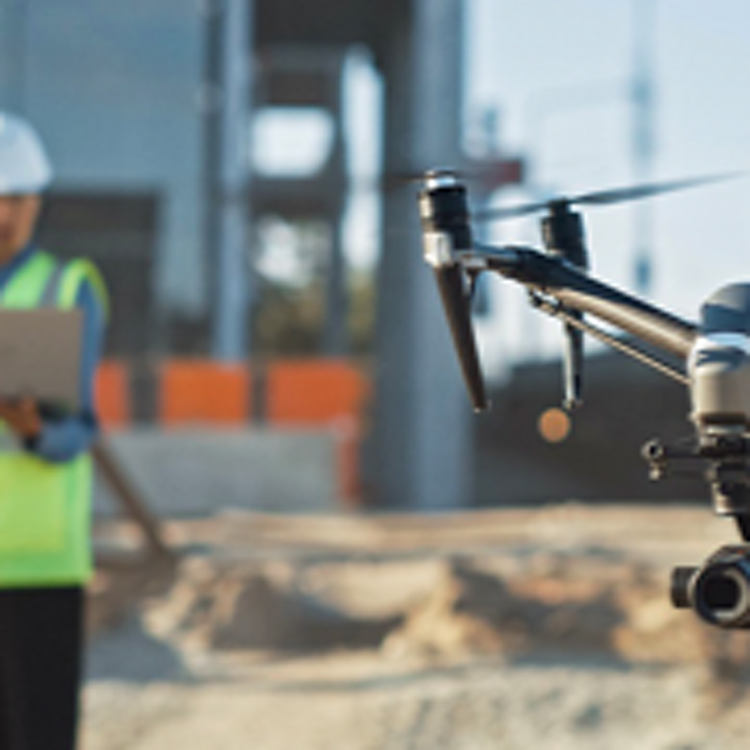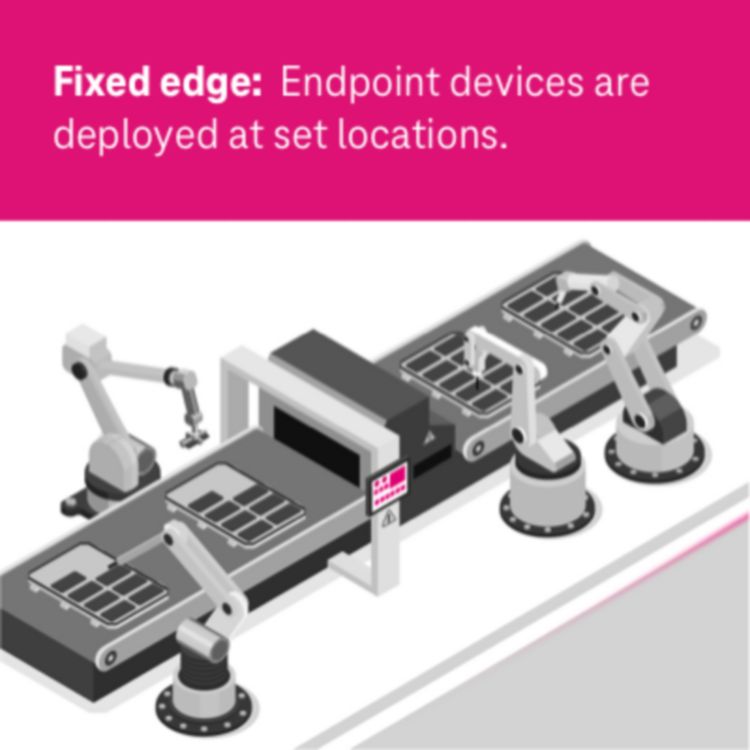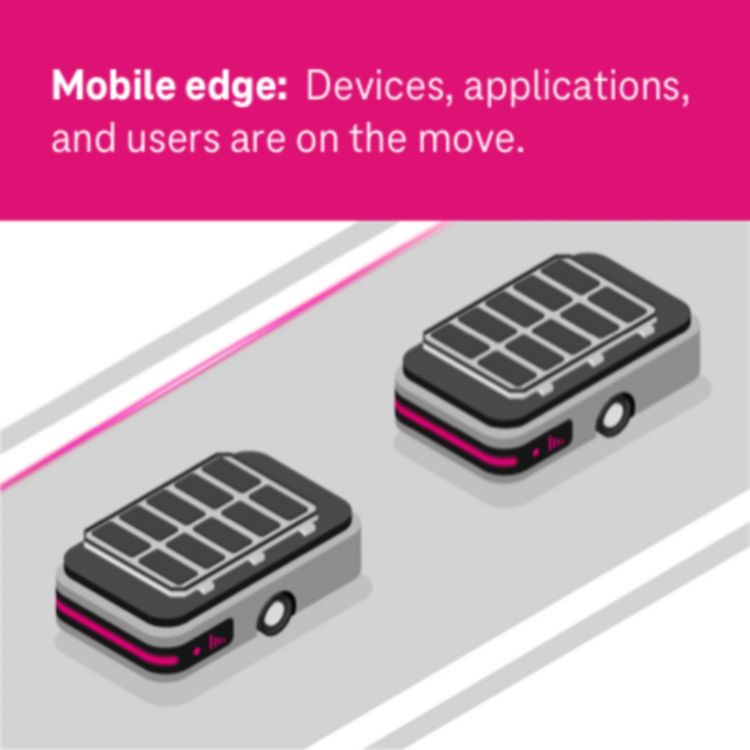Short window of opportunity to act on new data.


As businesses deploy more data-intensive devices and applications, they need the fastest and most comprehensive network capabilities, with very low latency, to enable the best performance and great user experiences.
6 minute read
In cases where local data processing is essential to business responsiveness and reliability, 5G and edge computing together can offer a critical boost.
This is especially true with use cases that demand low latency—near-real-time data transmission—like when augmented reality is used for worker assistance or when magic mirrors provide customer interactivity in a retail store. For these and a growing number of other scenarios, combining 5G and edge computing can offer the best of both worlds—5G’s speed, capacity, and low latency with edge computing’s architectural efficiency.
Could your business benefit from edge computing?
Nearly every enterprise today uses




Edge computing—also known as multi-access edge computing (MEC), or simply “Edge”—is an emerging technology that’s expected to become widely adopted within enterprises by 2025, according to the research firm Gartner.2
The trend is being driven by a growing need for responsive, reliable processing power where data is being generated—whether that’s on a factory floor, at a transportation hub, or on the playing field. In these settings and others, 5G and MEC are a powerful combination.
With MEC, data processing happens on systems and devices that are on the perimeter of enterprise infrastructure. That could be in a warehouse, retail outlet, or even a truck on the road. MEC is an evolution in cloud computing that moves computing power to the edge of the network, putting applications closer to end users and computing services closer to the data created by applications.

“MEC provides a new ecosystem and value chain,” according to ETSI, the international telecommunications standards organization.
MEC is an alternative to sending endpoint-generated data to centralized servers in a distant data center or in the cloud for processing. A MEC configuration may comprise:
Most businesses are still in the early going with MEC. Only about 10 percent of enterprise-generated data is created and processed outside of a central data center or the cloud. But industry experts expect that to change: Gartner predicts the figure will jump to 75 percent by 2025.3
A growing range of infrastructure systems are being developed for MEC environments. They include servers, gateways, routers, firewalls, and other wide area network (WAN) equipment.
“We're seeing the ecosystem pushing even farther to the Edge,” says David Chan, Director, Product Management,
Already in use are various digital devices including sensors, actuators, and Internet of Things (IoT) gateways—with built-in processing, artificial intelligence (AI), and analytics capabilities.



Gartner has identified “four major gaps” in business requirements that are driving the edge computing paradigm:
With its low latency, bandwidth, resilience, and robust security, 5G can close these gaps. So, it’s not surprising that 5G is such a natural fit with MEC.
There are compelling advantages—including responsiveness, resilience, and efficiency—when processing data locally or at the network edge. In many cases, these performance gains translate into business benefits.
Here are a few ways that can happen:
What does that look like in practice? Taqtile, a
5G and MEC work together in two primary ways:


Fixed edge can be valuable when processing data at a specific site. In precision agriculture, for example, sensors are used in the fields to monitor weather, soil, insects, and other factors related to a farm’s health.
Alternatively, 5G and MEC devices can be used together to establish a mobile edge, where 5G’s low latency, broadband capacity, and wide coverage provide ideal data connectivity. “Mobile use cases,” says Chan, “are where the Edge may really start to gain traction.”
Potential mobile edge use cases include theme parks, sporting events, and retail shopping centers—anyplace mobile devices or users generate data.
Business explorations into the potential for using 5G and MEC together often start with a particular opportunity or challenge to be solved. Such conversations, Chan says, are generally focused on solutions, more so than the technology itself.
Applications based on computer vision—which employs digital cameras to generate visual data—are a leading example. Manufacturing is another hot area, with MEC systems being deployed on the factory floor for process automation and predictive maintenance.
Other use cases identified by ETSI include IoT, local content distribution, data caching, and vehicle-to-anything (V2X) connectivity. “MEC will enable new vertical business segments and services for consumers and enterprise customers,” according to ETSI.
There are emerging applications across industries, such as immersive customer experiences in retail, event reporting in construction, and product tracking in transportation and logistics.
These deployments often involve technology partners working together to provide customers with an end-to-end network solution. We collaborate with equipment manufacturers, infrastructure providers, and cloud service providers to assess 5G-plus-MEC opportunities, and to bring the pieces together in an integrated architecture.
As edge computing catches on, it’s likely to spread to more devices and wider deployments. Economics are accelerating the trend, as MEC devices and intelligent routers with built-in processing become more affordable. As that happens, MEC deployments could grow to hundreds, or even thousands, of endpoints.
Mobile edge, says Chan, could become “the next frontier” in edge computing. “We're thinking about Edge a little bit differently than the other guys,” he says.
What might that look like? It could evolve into a bustling ecosystem of mobile edge solutions powered by 5G in transportation, logistics, supply chains, and other industry sectors.
That’s an opportunity for business and technology leaders to think differently about the ways that 5G and MEC can be used together to deliver value to their own organizations and customers.
1Gartner, Inc. “Infographic: Understanding Edge Computing,” April 2022.
2See “Infographic: Understanding Edge Computing,” April 2022, by Gartner Inc.
3Gartner, Inc. “What Edge Computing Means for Infrastructure and Operations Leaders,” October 2018.
5G: Capable device required; coverage not available in some areas. Some uses may require certain plan or feature; see